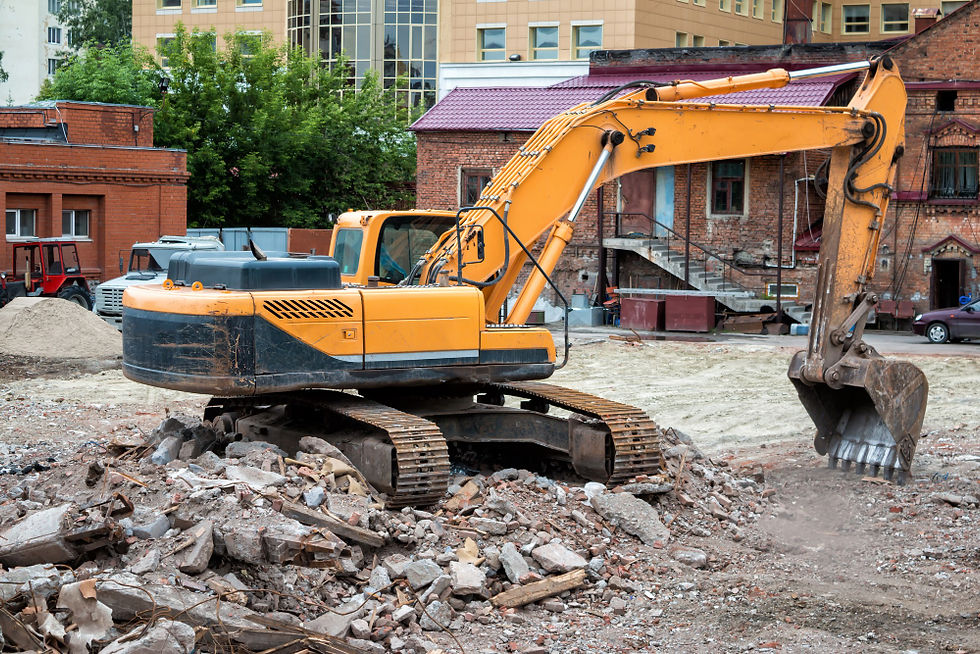Explore the Wide Range of Demolition Services
- Alan C. Gobrogge
- Apr 26, 2024
- 3 min read

Demolition services are integral to various industries, from construction to urban renewal projects. They involve strategically dismantling or destroying structures, paving the way for new developments or renovations. However, the realm of demolition extends far beyond simply tearing down buildings. It encompasses a diverse range of services tailored to meet specific project requirements. Let's delve into the wide spectrum of demolition services in Grand Rapids, from traditional methods to specialized techniques.
1. Building Demolition: This is perhaps the most recognizable form of demolition. It involves completely or partially removing structures such as residential homes, commercial buildings, and industrial facilities. Building demolition requires meticulous planning, including structural analysis, hazard assessment, and waste management strategies.
2. Interior Demolition: Interior demolition services are used when renovating or repurposing existing structures. It involves selectively removing interior components like walls, floors, ceilings, and fixtures while preserving the building's structural integrity. Interior demolition demands precision to avoid damage to surrounding areas.
3. Selective Demolition: Also known as deconstruction, selective demolition focuses on salvaging valuable materials for reuse or recycling. This sustainable approach minimizes waste and environmental impact by carefully dismantling specific components, such as wood, metal, or concrete, for repurposing.
4. Implosion: Contrary to popular belief, implosion isn't as widespread as depicted in movies. However, these services remain viable for demolishing large structures in densely populated areas. Controlled explosives are strategically placed within the building to cause it to collapse inward, minimizing the risk of collateral damage.
5. High Reach Demolition: Skyscrapers and tall structures require specialized equipment and techniques for safe and efficient demolition. High-reach demolition services utilize cranes or excavators equipped with long-reach arms to dismantle tall buildings floor by floor, ensuring controlled descent and debris containment.
6. Structural Demolition: Certain projects necessitate the removal of specific structural elements, such as bridges, dams, or industrial towers. Structural demolition involves engineering expertise to devise precise dismantling methods while considering factors like load distribution and environmental impact.
7. Concrete Cutting and Breaking: Demolishing concrete structures or removing sections for remodeling often requires specialized equipment like diamond saws, jackhammers, or hydraulic breakers. Concrete cutting and breaking services ensure precise removal while minimizing vibration and dust emissions.
8. Underwater Demolition: Demolition services aren't limited to dry land; they extend to underwater environments for tasks like removing submerged structures, pipelines, or offshore platforms. Underwater demolition teams utilize specialized tools and techniques adapted to the challenges of working beneath the surface.
9. Environmental Remediation: Demolition projects may encounter hazardous materials like asbestos, lead paint, or contaminated soil. Environmental remediation services involve safely removing and disposing of these materials to mitigate health risks and comply with regulatory standards.
10. Emergency Demolition: Natural disasters, structural failures, or safety hazards may necessitate urgent demolition measures to protect lives and property. Emergency demolition services are equipped to respond swiftly to mitigate risks and restore safety to affected areas.
11. Site Clearance and Grading: Existing sites often require clearance and grading to prepare the terrain before commencing new construction projects. Site clearance services involve removing vegetation, debris, and existing structures, while grading ensures the site's elevation and contours meet design specifications.
12. Recycling and Waste Management: Sustainable demolition practices prioritize recycling and proper waste management to reduce environmental impact. Demolition contractors collaborate with recycling facilities to process salvaged materials like metal, wood, and concrete, diverting them from landfills.
Conclusion:
Demolition services in Grand Rapids are multifaceted, encompassing a broad spectrum of techniques and specialties tailored to diverse project requirements. From traditional building demolitions to specialized services like underwater demolition and environmental remediation, each aspect demands expertise, precision, and a commitment to safety and sustainability. By leveraging the right combination of demolition techniques, contractors from Affordable Excavating Inc can effectively clear the way for new developments while minimizing environmental impact and maximizing resource recovery.




Comments